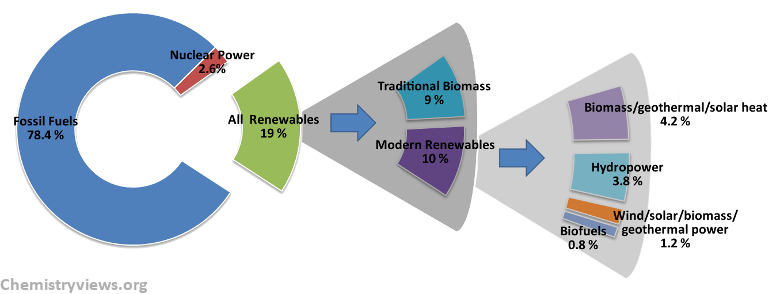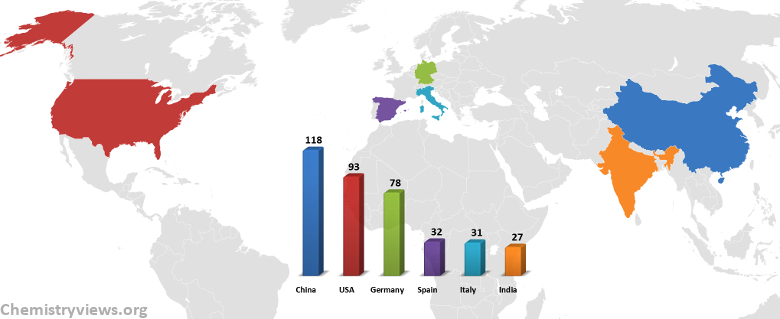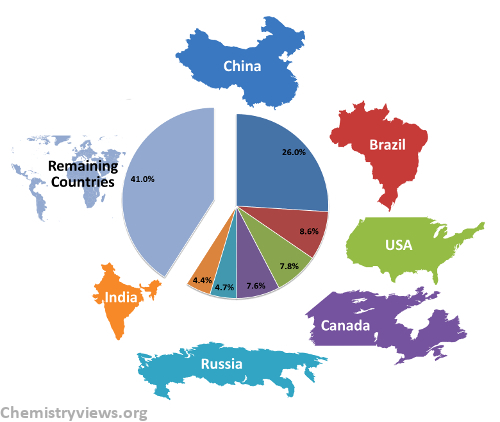Diminishing resources and rising costs of fossil fuels, the dangers and long-term effects of nuclear energy production, and global warming caused by human greenhouse gas emissions make the development of renewable energies an important concern. In 2013, renewable energy capacities reached a record high and comprised about one fifth of global energy consumption. They rose by 8 % last year and accounted for 56 % of net additions to global power capacity.
Estimated Renewable Energy Share of Global Energy Consumption 2012
(divided by type)

Renewable Power Capacities 2013, Top Six Countries
(in gigawatts)

Growth of Solar Power and Wind Power Capacity 2004 – 2013
(in gigawatts)

Hydropower Capacity Shares in 2013 by Country
(top six countries)

Estimated Direct and Indirect Jobs in Renewable Energy Worldwide
(in thousands, excluding large-scale hydropower)
.jpg)
Market Share of Wind Turbine Manufacturers 2013
(top ten)
.jpg)
Worldwide Investment in Renewable Power and Fuels 2004 – 2013
(in billion USD, decline in investment partly caused by uncertainty over incentive policies, but also by sharp reductions in technology costs)
.jpg)
Reference
- Renewables 2014 Global Status Report
Renewable Energy Policy Network for the 21st Century
ISBN 978-3-9815934-2-6
Also of Interest
- Renewable Energies: Wind, Solar, Biomass,
ChemistryViews 2012.
DOI: 10.1002/chemv.201200005 - All Industry Roundups





The developing countries must focus on the use of renewable energies: wind, solar and biomass for sustainable development, especially planting of trees.